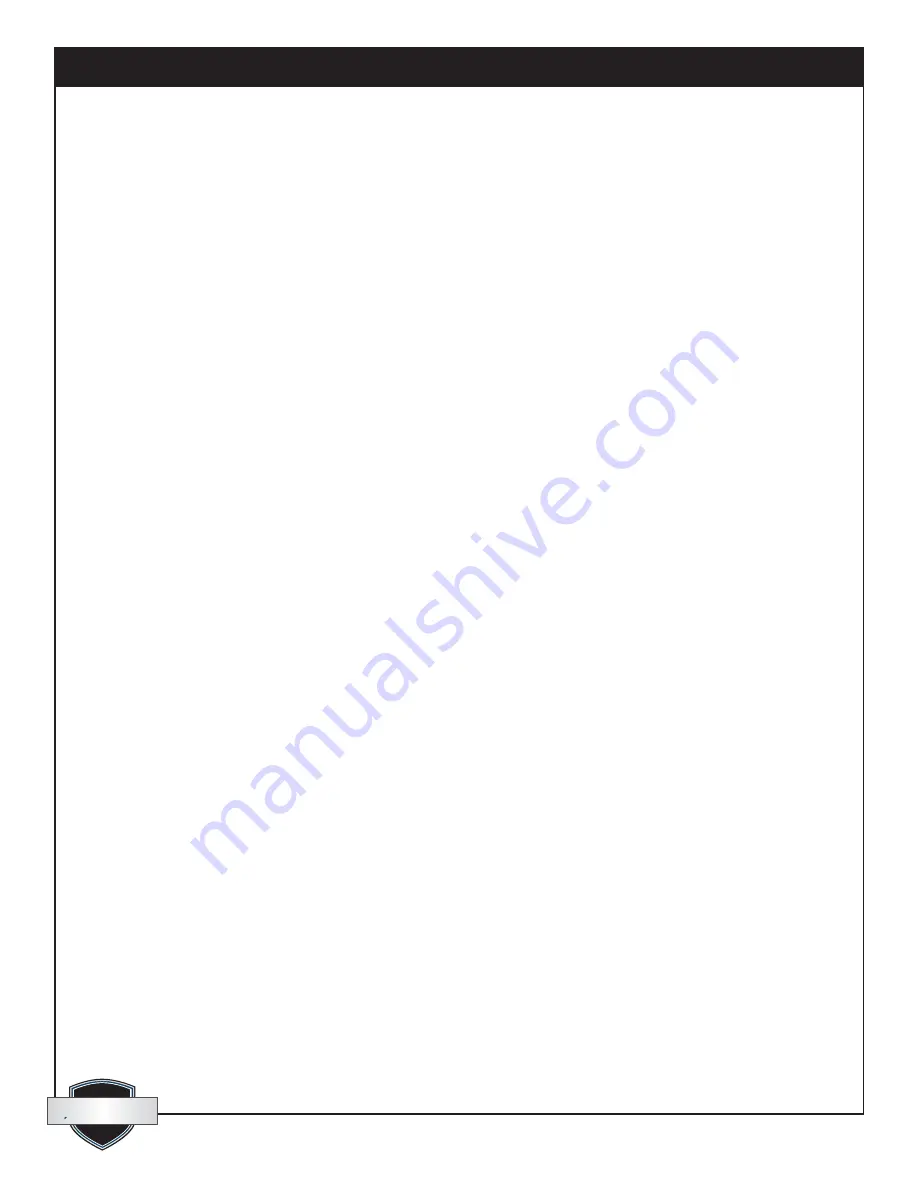
quest
Asset Protection and IAQ Solutions
quest
1-800-533-7533
HI-E DRY 195
Installation, Operation and Maintenance Instructions
6
www.QuestProtect.com
quest
quest
2.3 Condensate Removal
The HI-E Dry 195 is equipped with an internal condensate pump to remove the water that is condensed
during dehumidification. This allows the condensate to be pumped 20’ with the attached hose. If the
condensate must be pumped more than 20 feet above the unit, a second pump must be added to relay the
condensate. The condensate pump is mounted inside the HI-E Dry 195 as a permanent, integral part of the
unit. It includes a safety switch feature that prevents flooding by turning off the HI-E Dry 195 if the pump
fails.
2.4 Ducting
2.4A Optional Ducting
Two twelve-inch collars are available as a kit from the factory that will allow ducting to be attached to the
inlet and outlet of the HI-E Dry 195. Attach the inlet collar to the top of the unit by cutting the eight tabs
that support the 12” round opening in the top. The 12” collar with three tabs can be attached via the holes
provided in the front of the unit, and the other 12” collar can be affixed to the top opening.
2.4B Ducting for Dehumidification
Ducting the HI-E Dry 195 as mentioned in sections 2.1B-2.1E requires consideration of the following points:
Duct Sizing: For total duct lengths up to 25’, use a minimum 10” diameter round or equivalent rectangular.
For longer lengths, use a minimum 12” diameter or equivalent. Grills or diffusers on the duct ends must not
excessively restrict airflow.
Isolated Areas: Effective dehumidification may require that ducting be branched to isolated, stagnant areas.
Use 8” diameter branch ducting to each of two or three areas; use 6” to each of four or five areas; use 4” to
each of six or more areas.
2.4C Ducting for Fresh Air
Fresh air can be brought into the structure continuously by connecting a duct from outside to the HI-E Dry
195 inlet and by turning on the fan switch. Advantages of this form of ventilation include:
1. Outside air is filtered before entering the building.
2. Outside air will be dehumidified before entering if the HI-E Dry 195 is running.
3. Drawing air from outside and blowing inside aids in pressurizing the structure. This helps prevent
unfiltered and undehumidified air from entering elsewhere. It also reduces the potential for carcinogenic
radon gas to enter.
4. The need for an alternate ventilation device may be eliminated.
An insulated 4” diameter duct is generally sufficient to provide up to 70 CFM of outside air. A 6” duct with
an adjustable damper is recommended for higher flows. Large quantities of outside air will impact HI-E Dry
195 performance positively or negatively, depending upon the difference between inside and outside air
conditions. Consult the factory by calling 1-800-533-7533 for recommendations regarding the use of higher
flows with your specific application.
The outside air duct should be connected into the main inlet duct close to the unit. If no other inlet duct is
used, it may be necessary to obstruct the inlet of the HI-E Dry 195 to ensure adequate ventilation.

















